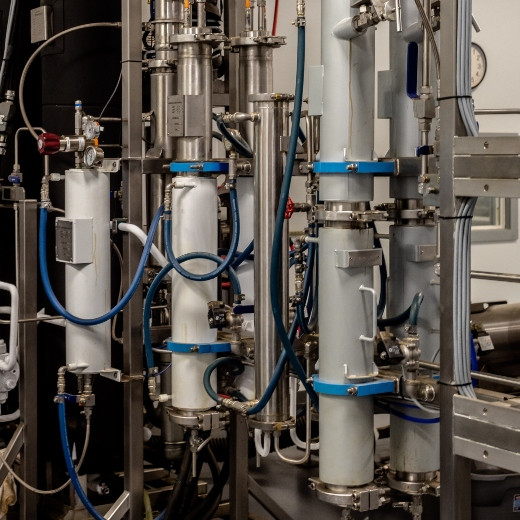How Is CBD Extracted From Hemp?
Jun 30th 2021
It has spread like wildfire! Cannabidiol (CBD) has rapidly found its way into a wide variety of products. From CBD dog treats to CBD drops to CBD creams, it’s in just about everything.
How does it get there?
It’s not as simple as grinding up hemp rich in CBD and blending it into CBD products. The process is more sophisticated than that. CBD is extracted from hemp before it becomes a part of the end product’s formulation. Let’s dive into a few of the more popular methods of CBD extraction.
Synthetic Solvent Extraction
One of the oldest methods is solvent extraction. A synthetic solvent, such as ethanol, butane, or propane is soaked or washed over the plant matter, drawing out the CBD and other compounds. This hemp extract can then be further refined and purged to leave a highly concentrated hemp extract oil.
Pros: This process is cost-effective and efficient.
Cons: The solvents used are flammable causing this process to be dangerous. The residual solvent can be left in the resulting product. Undesirable compounds, namely chlorophyll, can be extracted as well, creating an unpleasant taste.
Natural Solvent Extraction
Instead of a synthetic solvent, natural solvents such as olive oil, coconut oil, or hempseed oils can be used. Before adding the solvent to the plant matter, the matter is heated to a certain temperature to be decarboxylated. After decarboxylation, the natural solvent is added and it is heated again to extract the CBD. Unlike the synthetic solvents which evaporate, these natural solvents do not, so the resulting hemp oil is not as concentrated as CBD hemp oil from synthetic solvent extractions.
Pros: This method is inexpensive and easy to do in one’s own home. There is not much of a safety risk as the solvents are less flammable. The leftover solvent is part of the end product and is not a health concern.
Cons: The resulting CBD oil is not as highly concentrated as other methods. The taste may not be pleasant. This end product has a shorter shelf life than other methods.
Steam Distillation
This method is commonly used in the extraction of essential oils. Steam is used to remove the CBD from the plant matter. The steam then condenses and is a mixture of CBD oil and water. The water is separated from the oil, leaving the CBD tincture to remain.
Pros: This method is inexpensive and does not require a solvent.
Cons: Steam distillation is inefficient and produces inconsistent results. Some of the heat-sensitive cannabinoids may be damaged.
CO2 Extraction
CO2 (carbon dioxide) is normally in a gaseous state. It is put under pressure until it reaches what is known as a supercritical point. At its supercritical point, the CO2 is somewhere between a gaseous and liquid state but retains some properties of both states. The supercritical CO2 is pumped through the plant matter, extracting the CBD oil. When the mixture returns to normal atmospheric pressure, the CO2 evaporates, leaving only highly concentrated full-spectrum CBD oil.
Pros: This method is very precise, environmentally friendly, and the CBD extract produced is solventless.
Cons: The equipment necessary for this extraction is expensive.
Complete Hemp’s CBD Oils
At Complete Hemp, all of our CBD oils for sale are extracted using our proprietary method of CO2 extraction. Try them out and find out which one works best for you!
Check out our full shop for the rest of our CBD products.
References:
https://pharmstrong.com/what-are-the-most-popular-cbd-extraction-methods/
https://www.europeanbusinessreview.com/everything-about-cbd-extraction-methods/

